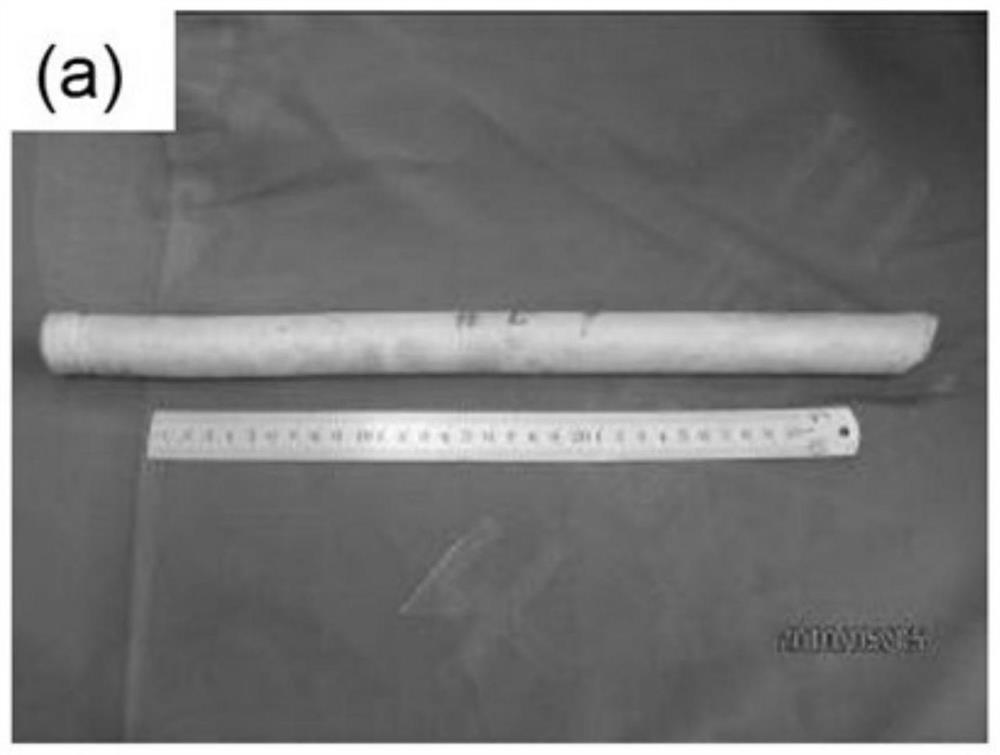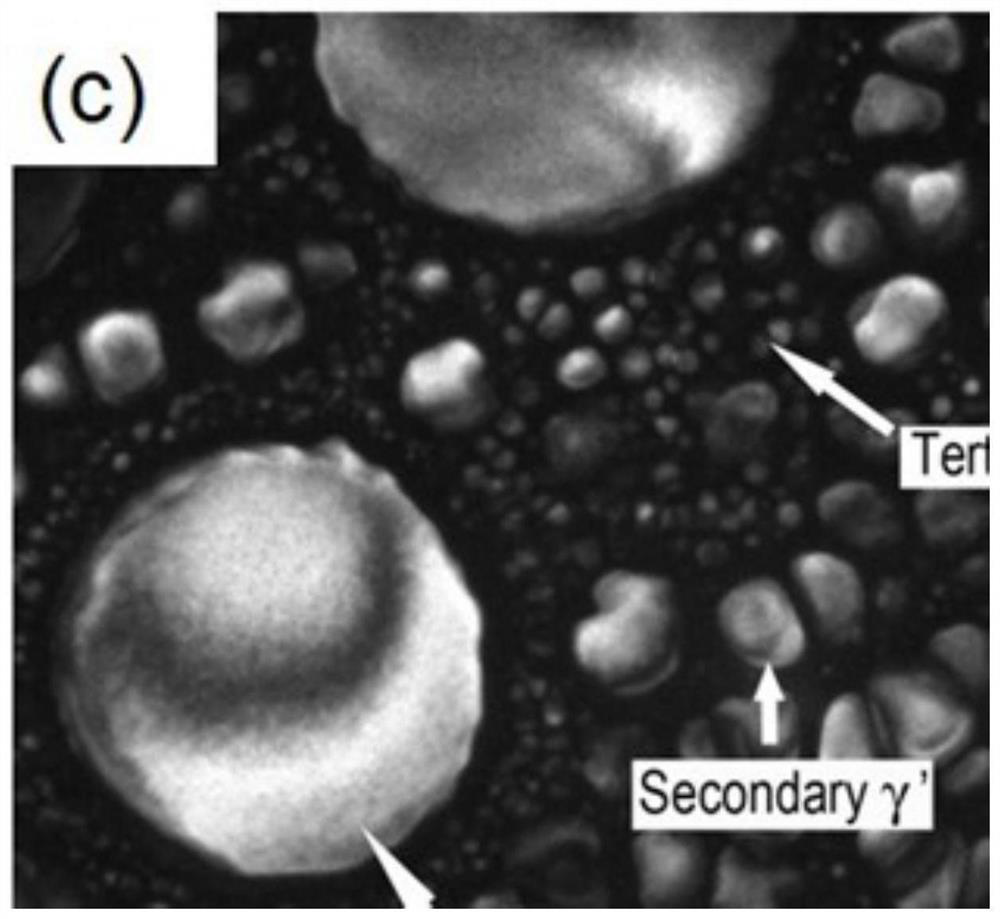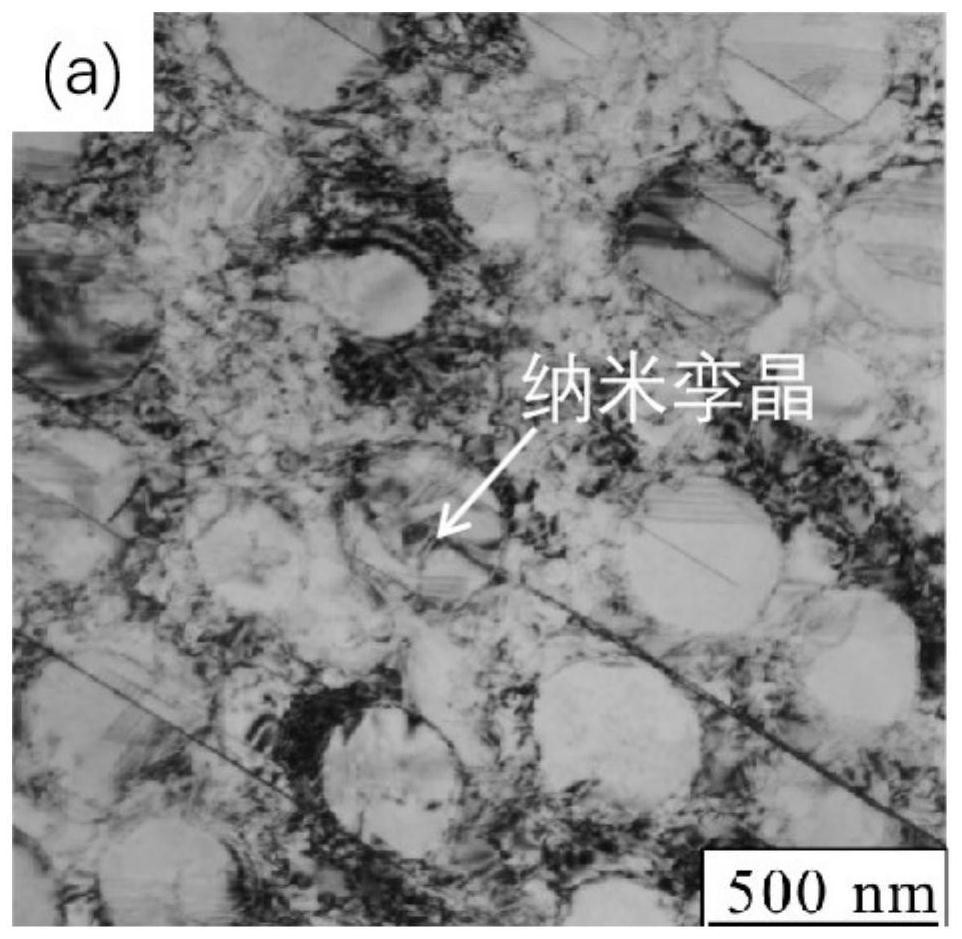High-temperature alloy and preparation method thereof
A technology for superalloys and alloy ingots, applied in the field of metal structural materials, can solve the problems of research and reports of superalloys without nano-twins, loss of strengthening effect, etc., and achieve good twinning deformation ability, stacking fault energy reduction, and simple method. Effect
- Summary
- Abstract
- Description
- Claims
- Application Information
AI Technical Summary
Problems solved by technology
Method used
Image
Examples
preparation example Construction
[0039] The invention provides a high-temperature alloy and a preparation method thereof. The high-temperature alloy contains nano-twins. Due to the strengthening effect of the nano-twins, the high-temperature alloy has excellent high-temperature strength, and is mainly suitable for high temperature and high stress (700-850° C.) Used components such as turbine disks and blades for aero-engines.
[0040] On the one hand, the composition design of the superalloy containing nano-twins of the present invention is as follows: by weight percentage, the superalloy includes the following composition: Co 18-25%, Cr 11-15%, Ti 5-6.3%, Al 1.0-3.0%, W 1-4%, Mo1-4%, Fe 0-4% (preferably 2.1-4%), Ta 0-4% (preferably 1-4%), C<0.05% (preferably at 0.02 -0.05%), Zr<0.05% (preferably 0.02-0.05%), and the balance is Ni. The sum of the weight percentages of Co and Ta is controlled between 20-29 wt%.
[0041] Here, it should be noted that: the role of alloying elements in the superalloy of the pre...
Embodiment 1
[0064] Embodiment 1 Design a superalloy, wherein, by weight percentage, the chemical composition of the superalloy is: Co23%, Cr 14%, Ti 5.8%, Al 2.4%, W 1.5%, Mo 3%, Fe 2.5% , C 0.02%, Zr 0.03%, and the balance is Ni.
[0065] Wherein, the preparation method of the superalloy comprises the following steps:
[0066]1): The alloy raw material is put into a vacuum induction furnace for melting, and the melted alloy liquid is poured into electrode rods; then, the electrode rods are remelted by electroslag and cast into alloy ingots.
[0067] 2): Treat the alloy ingot at 1130°C-1150°C for 10 hours, and then at 1170-1200°C for 10 hours.
[0068] 3): The homogenized alloy ingot is subjected to hot extrusion treatment at a temperature of 1120° C. to 1150° C. to prepare an alloy rod with a grain size of 30 μm. The melting point Tm of the alloy rod is 1345°C.
[0069] 4): Cut a part from the alloy rod as a workpiece. Seven parts were cut to obtain seven processed parts, and the fol...
Embodiment 2
[0078] Embodiment 2 Design a superalloy, wherein, by weight percentage, the chemical composition of the superalloy is: Co19%, Cr 13%, Ti 5.5%, Al 2.5%, W 1.5%, Mo 3%, Ta 2% , C 0.02%, Zr 0.03%, and the balance is Ni.
[0079] Wherein, the preparation method of the superalloy comprises the following steps:
[0080] 1) The alloy raw material is put into a vacuum induction furnace for smelting, and the smelted alloy liquid is poured into an electrode rod; then, the electrode rod is remelted by electroslag, and then poured into an alloy ingot.
[0081] 2) Treat the alloy ingot at 1130°C-1150°C for 10 hours, and then at 1170-1200°C for 10 hours.
[0082] 3) The homogenized alloy ingot is hot-extruded between 1110° C. and 1140° C. to prepare an alloy rod with a grain size of 30 μm. The melting point Tm of the alloy rod is 1347°C.
[0083] 4) Cut a part from the alloy rod as a workpiece. Cut 7 parts to obtain 7 workpieces. These 7 workpieces are processed by 7 different processes...
PUM
| Property | Measurement | Unit |
|---|---|---|
| Grain size | aaaaa | aaaaa |
Abstract
Description
Claims
Application Information
 Login to View More
Login to View More - Generate Ideas
- Intellectual Property
- Life Sciences
- Materials
- Tech Scout
- Unparalleled Data Quality
- Higher Quality Content
- 60% Fewer Hallucinations
Browse by: Latest US Patents, China's latest patents, Technical Efficacy Thesaurus, Application Domain, Technology Topic, Popular Technical Reports.
© 2025 PatSnap. All rights reserved.Legal|Privacy policy|Modern Slavery Act Transparency Statement|Sitemap|About US| Contact US: help@patsnap.com



